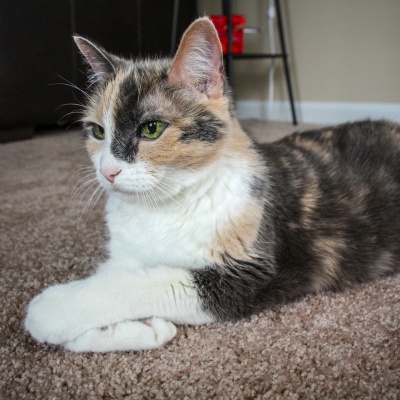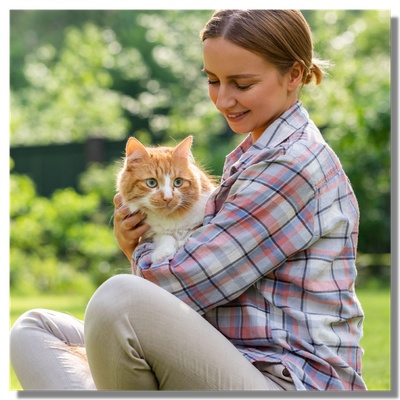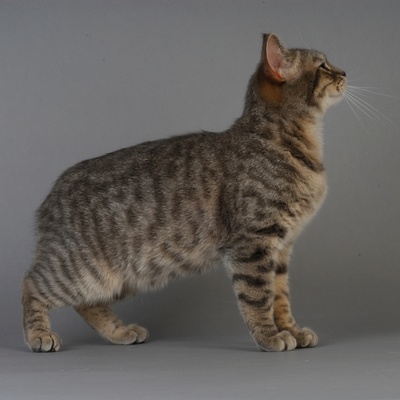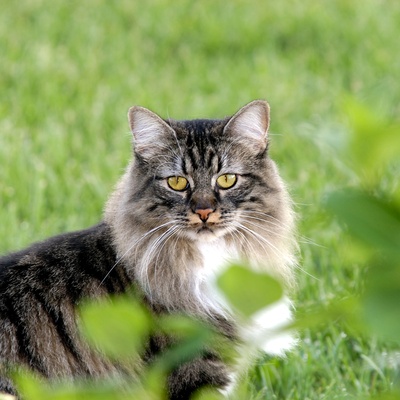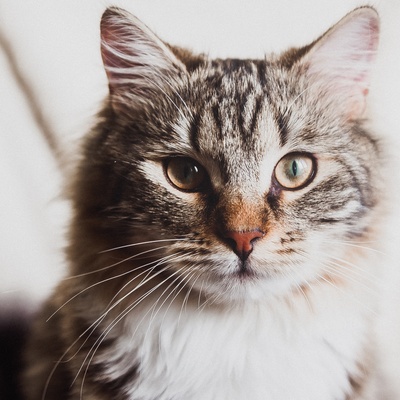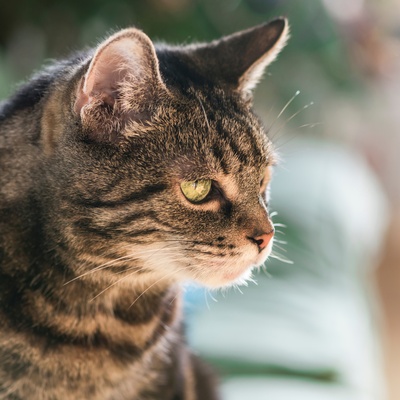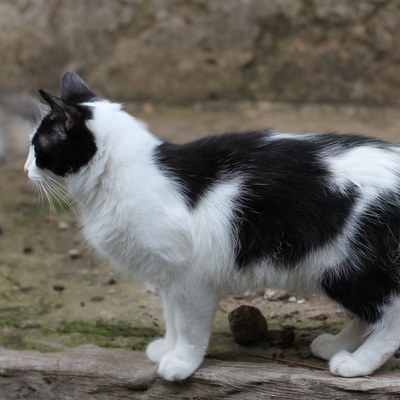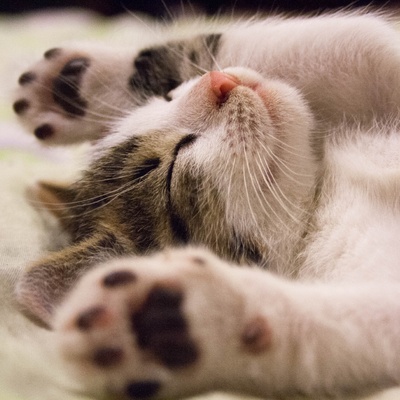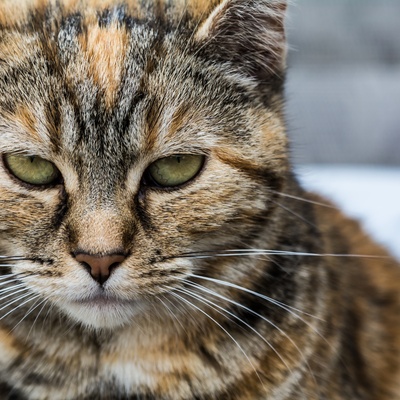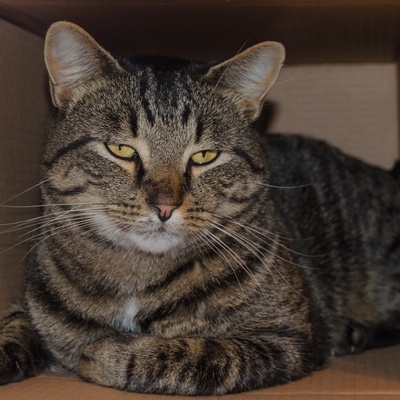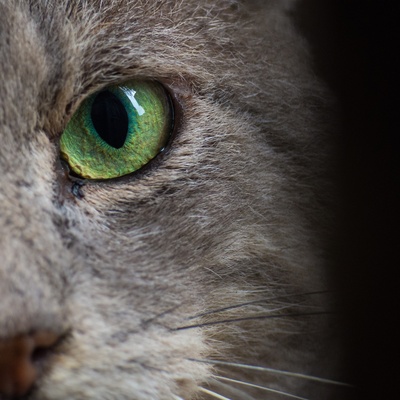Introducing the Manx
Find out everything you need to know about the Manx : its characteristics, its behaviour, its training and how much one costs.
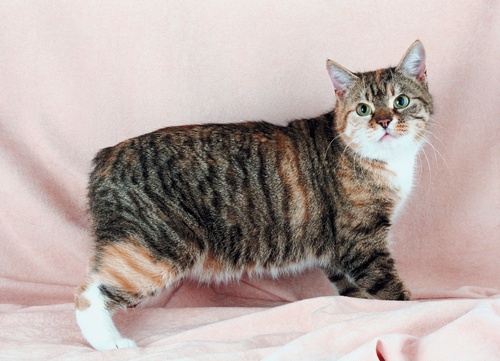
Find out everything you need to know about the Manx : its characteristics, its behaviour, its training and how much one costs.
The Manx cat is an extraordinary breed. Native to the Isle of Man, this breed is most famous for its unique taillessness, a trait that sets it apart from other felines. The Manx cat's taillessness is the result of a genetic mutation, and it can range from having no tail at all to a small stub. This distinctive feature gives the Manx a round, rabbit-like appearance, which is further enhanced by its rounded head and large, expressive eyes.
This section outlines the unique features of the Manx breed of cat.
The Manx cat is a medium-sized breed, typically weighing between 8 to 12 pounds, with a robust and rounded appearance.
They have a double coat that can be either short or long, characterized by its dense, plush texture.
The Manx cat is not specifically known as a hypoallergenic breed, making it a standard choice for individuals with allergies.
They exhibit a variety of coat colors and patterns, ranging from solid hues to tabby markings, with shades varying from white to black.
The Manx cat thrives in both indoor and outdoor environments, adapting well to family living and enjoying interactive play.
They are known for their friendly and sociable nature, often good with children and other pets, exhibiting dog-like loyalty.
Manx cats are generally robust but can have specific health concerns, notably spinal issues due to their taillessness.
They are intelligent and responsive, making them relatively easy to train with patience and positive reinforcement.
We can help you!
Every cat has its own character and specific needs. Making the right choice will ensure his well-being and yours.
Thanks to our quiz, you'll know which breed is right for you, depending on your lifestyle, expectations and many other criteria.
Don't wait any longer and take the quiz to find out the answer!
The Manx cat is most renowned for its distinctive lack of a tail. This trait makes it resemble a small, fluffy bunny more than a traditional cat.
The Manx cat is medium in stature, exuding a compact and robust presence. Males are typically heavier than females, with males averaging between 10 to 12 pounds, while females weigh slightly less.
These cats mature slowly, reaching their full physical development around 3 to 4 years of age. Alongside their unique taillessness, the Manx cat is known for its rounded, muscular build and a deep chest, all contributing to its distinctive silhouette.
The Manx cat boasts a double-layered coat that can vary in length from short to long. The short-haired variety has a dense, plush coat, while the long-haired, also known as the Cymric, exhibits a silky, medium-length coat with longer fringes around the neck, legs, and tail area.
The Manx cat's coat comes in a diverse color palette, including solid, tabby, tortoiseshell, and calico. Common colors range from white, black, blue, and red to cream, silver, and even shades of chocolate and lilac.
Each Manx cat displays a unique combination of these colors, making every individual distinct in its appearance.
The Manx cat is distinguished not only by its taillessness but also by its robust and rounded body structure. Its ears are medium-sized, set wide apart, and taper to a rounded point, giving it an alert appearance.
The body of a Manx cat is characterized by a strong bone structure and well-developed musculature, contributing to its solid and compact look. Its muzzle is broad and rounded, complementing its overall rounded features.
The eyes of a Manx cat are one of its most captivating features, large and round, and can come in various colors such as blue, green, or gold.
Grooming a Manx cat involves regular brushing, especially for the long-haired variety, to prevent matting and reduce shedding. They do experience seasonal shedding, and during these times, increasing the frequency of brushing is beneficial. Bathing a Manx cat is not frequently required, but when done, it should be with a cat-specific shampoo. While Manx cats are adept at grooming themselves, an occasional bath can help to keep their coat in optimal condition and reduce allergens.
The Manx cat is known for its friendly and affectionate nature. It's a perfect companion for families and individuals alike.
The Manx cat is renowned for its sociable and amiable disposition. They are notably affectionate, often forming a strong bond with their owners and following them around the house. While they enjoy playtime, they equally cherish extended cuddle sessions.
The Manx is vocal in a charming way, with a range of purrs, meows, and soft trills that communicate their mood. This breed thrives on attention and companionship, making it essential for owners to be present and engaged.
Manx cats have a gentle and patient personality. They are generally quiet and easy-going, making them great companions for families, including those with children, dogs, and other cats.
Manx cats are sociable but not domineering. When overwhelmed or in need of calm, they prefer to withdraw peacefully rather than show aggression. This breed's laid-back nature makes it the ideal pet for a loving and attentive home.
The Manx cat is highly adaptable to various living environments, from cozy apartments to spacious homes. Their adaptability is complemented by their affectionate nature, often preferring environments where their human companions are present.
While they are content in indoor settings, they also appreciate having space to explore and engage in playful activities, making a secure outdoor area a bonus.
Manx cats, with their playful and curious attitudes, thrive in environments that provide mental and physical stimulation. Regular playtime with their owners is beneficial for their health, helping to prevent boredom and the possibility of destructive behavior. It's important to balance their active time with quiet, calm spaces where they can retreat and rest.
If you're worried about losing track of your Manx cat, you can fit them with a cat tracker to track their movements and find them if they run away.
It’s crucial to begin training a Manx cat from an early age to ensure they develop good habits. Their education should be grounded in kindness, patience, and consistency. This breed responds well to positive reinforcement and rewards. Consistent training helps in establishing good behaviors early on.
Choosing a cat that matches your personality and lifestyle will ensure your well-being and his!
The Manx is a resilient and robust breed, typically free from specific health problems. Known for its sturdy character, this breed generally maintains good health throughout its life.
Although Manx cats are generally known for being hardy and in good health, they are not immune to certain genetic disorders. Like many cat breeds, the Manx lacks its distinctive tail, which can make it prone to certain health problems, including: B. Hypertrophic cardiomyopathy, heart disease, and spinal disease in cats.
DNA tests allow to detect these diseases early and help prevent infection. Regular veterinary visits are very important for Manx cats to ensure they are vaccinated against common diseases such as feline distemper and rabies, and to maintain their overall health.
Day-to-day care of a Manx cat includes regular veterinary check-ups for vaccinations and parasite control. Owners should also pay attention to dental care, grooming of their coat, and monitoring their ear health to prevent infections. Given their sometimes shortened spine, it's also important to keep an eye on any mobility issues or discomfort they may experience. Regular play and a balanced diet are key to maintaining their physical and mental well-being.
Known for their strong, muscular physique and sturdy body, Manx cats require a high-quality diet to maintain their physique and overall health. A diet consisting mainly of nutrient-dense dry foods is recommended. To support kidney health and add variety to your diet, include complementary foods such as water-rich green vegetables.
Consistency in food brands helps maintain nutritional stability and prevent digestive problems. Feeding at scheduled times also helps regulate the digestive system and ensures optimal health.
The Manx cat is a cherished and unique breed. There are several breeders specializing in this breed, and it’s important to consider a few factors before adoption.
Manx cats, being purebreds, are often bred by professional breeders or in catteries. It's crucial to visit these sites to check the living conditions and ensure they meet high standards.
From June 10, 2024 you must have your cat microchipped by the age of 20 weeks old and register its details in a relevant database such as Petlog or The Governing Council of the Cat Fancy (GCCF). This is a legal requirement in Britain, and failure to comply could result in a fine of
.
This ensures the legitimacy of the breed and breeding practices. It's also important to verify that the cat and its parents have undergone necessary health examinations and DNA tests to identify any hereditary health issues.
The purchase price of a Manx cat, typically between
to
for kittens and lower for adults, depends on factors like breed lineage and breeder reputation. Ongoing annual expenses, including food and veterinary care, average between
to
.
Adopting a Manx cat is a long-term commitment, often spanning over a decade, so it's important to be fully prepared for the responsibilities of cat ownership.
Choosing a cat that matches your personality and lifestyle will ensure your well-being and his!
To access the most relevant information, suitable payment methods, and delivery in your region, please select the website corresponding to your country.
